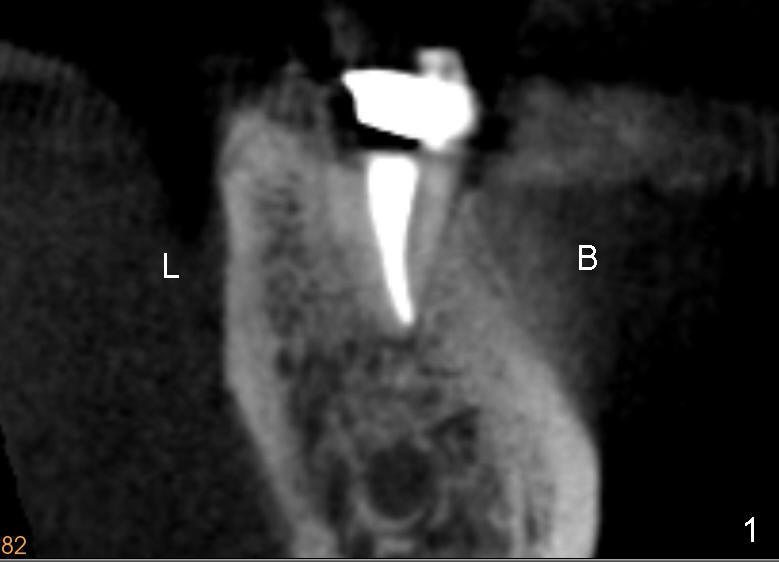
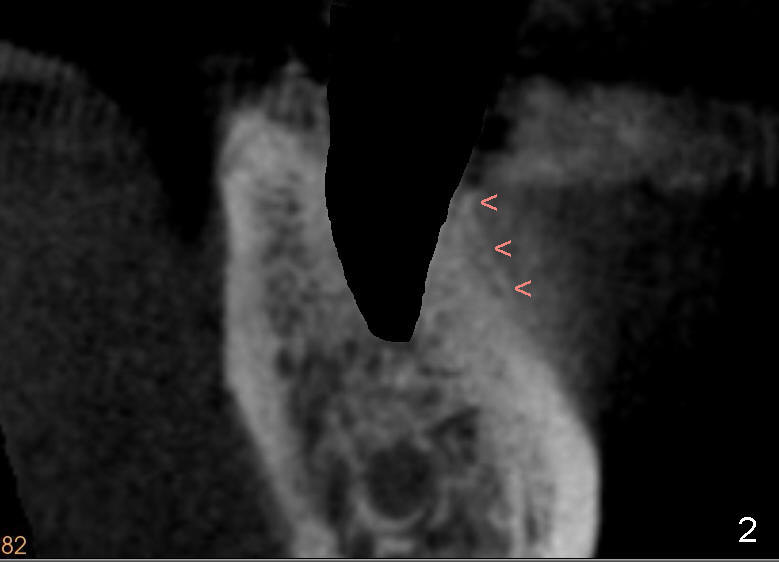
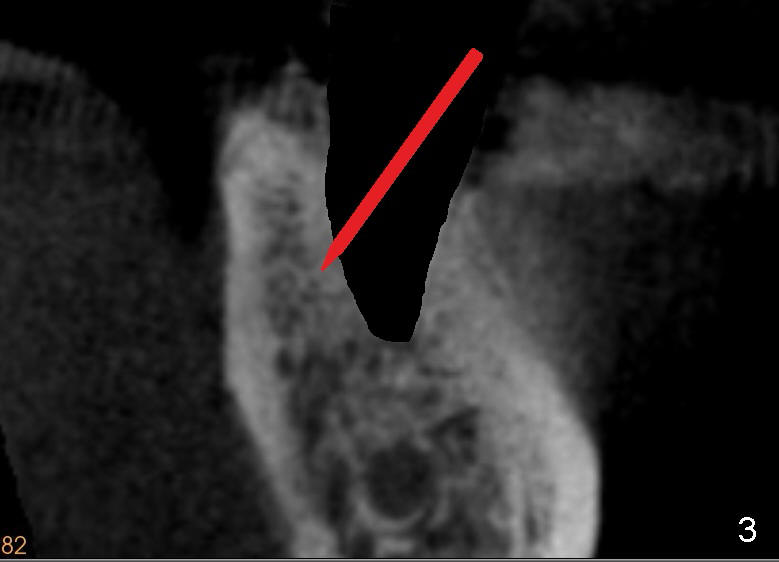
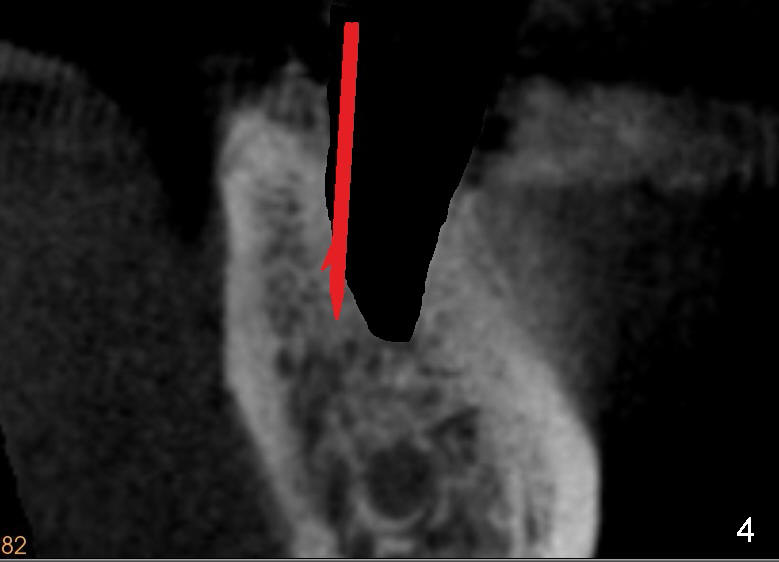
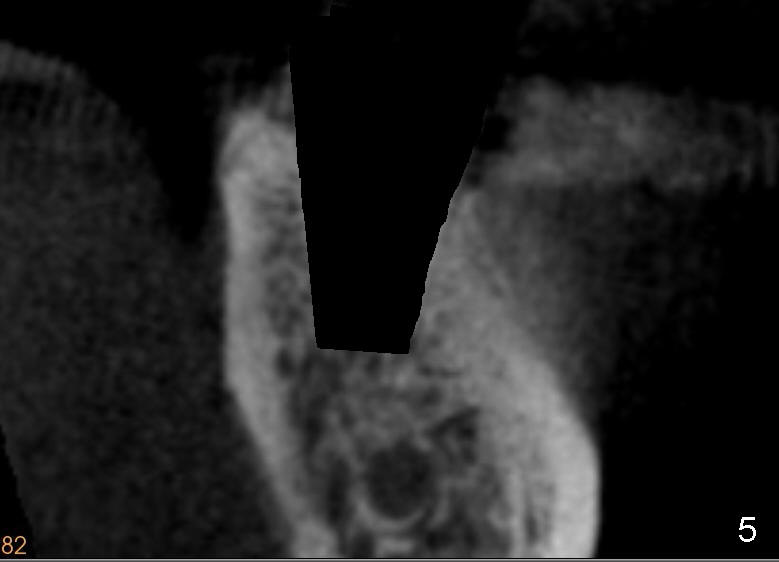
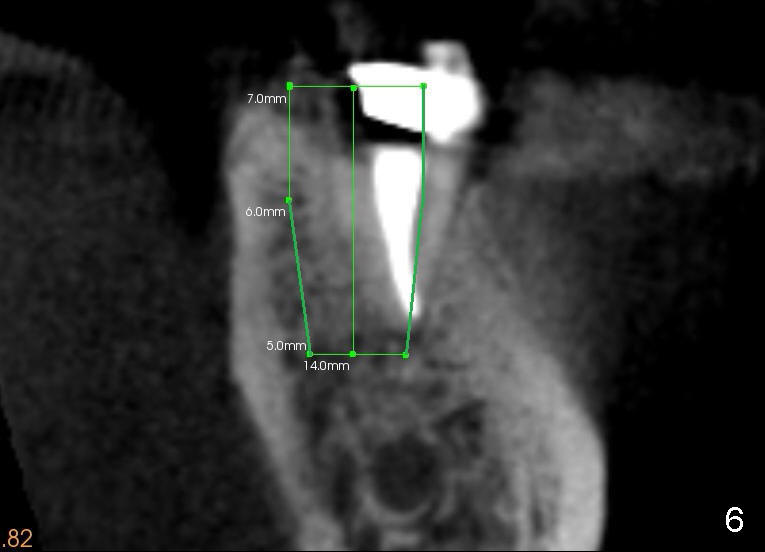
 |
 |
 |
 |
 |
 |
Direction of Osteotomy for Immediate Implant in Lower Molars
The root of the lower molar is more or less situated buccally, as shown in Fig.1 (coronal section of the distal root of a 2nd molar). If osteotomy follows the path of the original socket (black shadow in Fig.2 (Fig.1 after extraction)), the buccal plate (<) would be thin and low when an implant is placed.
To overcome this problem, a pilot drill penetrates the buccal slope of the lingual wall (Fig.3 red line). Once the pilot drill gets "bite", change its direction to finish osteotomy (Fig.4). When subsequent drills are being used, lean each drill lingually, against "natural" tendency of the drill sliding buccally.
With planning and effort, the final osteotomy is in the middle of the socket (Fig.5). The implant is placed in restoratively favorable position (Fig.6).
With practice, the morphology of the socket can be identified clinically after extraction. The "natural" tendency of drill drifting buccally may be noticed.
Return to Lower Molar Immediate Implant
Xin Wei, DDS, PhD, MS 1st edition 01/28/2014, last revision 03/15/2015